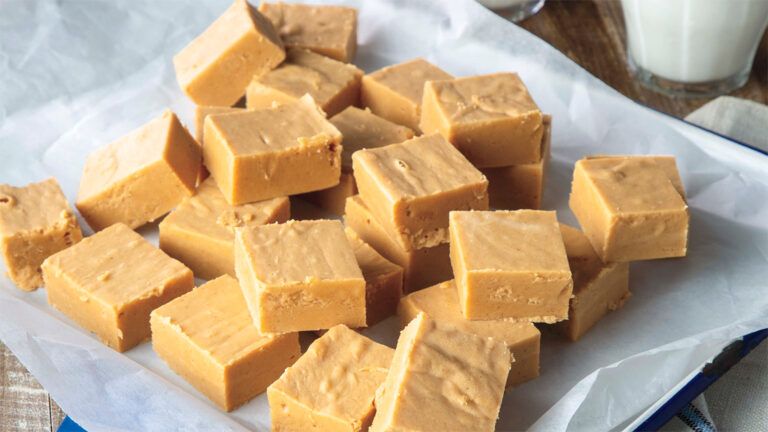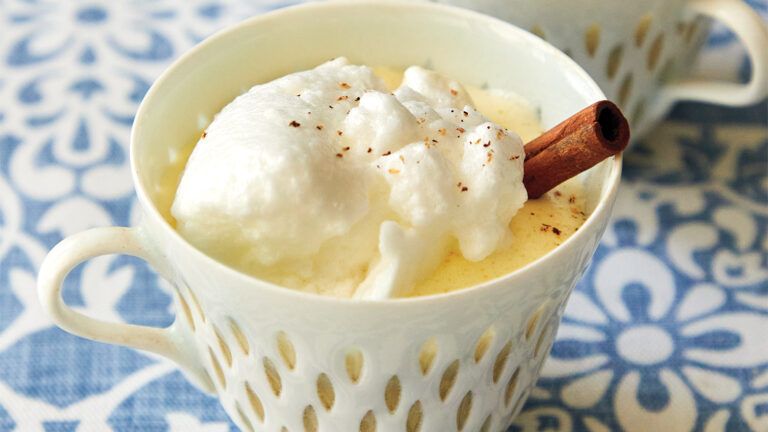The fun of writing your own pie cookbook is that you don’t have to justify weighting the material toward your personal favorites. So without apology, I present yet another blueberry pie that I simply love.
I think of this as a sort of “Best of New England” blueberry pie: small, sweet-tart wild blueberries sweetened with real maple syrup. The earthy cornmeal crust is a nod to earlier times, when cornmeal was much more commonly used in American kitchens. It’s crunchy yet tender, the perfect crust when you want a rustic pie for your family or a casual gathering. I like to serve it with vanilla ice cream.
Ingredients
1 recipe Cornmeal Pie Pastry, Double Crust (see below), refrigerated
Filling
3 cups wild blueberries, canned (drained), frozen (partially thawed), or fresh (picked over for stems)
¼ cup pure maple syrup, preferably light or medium amber
2 tablespoons sugar
1½ tablespoons cornstarch
1 tablespoon fresh lemon juice
⅛ teaspoon ground cinnamon
Preparation
1. If you haven’t already, prepare the pastry and refrigerate until firm enough to roll, about 1 hour.
2. On a sheet of lightly floured waxed paper, roll the larger portion of the pastry into a 12-inch circle with a floured rolling pin. Please note that this pastry is a little softer than some and the graininess from the cornmeal makes it slightly more fragile, so proceed delicately and with a well-floured pin. Invert the pastry over a 9-inch standard pie pan, center, and peel off the paper. Gently tuck the pastry into the pan, without stretching it, and let the overhang drape over the edge. Place in the refrigerator for 15 minutes.
3. Combine the blueberries and maple syrup in a medium-size bowl. Combine the sugar and cornstarch in a small bowl, then stir the mixture into the blueberries along with the lemon juice and cinnamon.
4. Turn the filling into the chilled pie shell, smoothing the fruit with a spoon. Preheat the oven to 400°F.
5. Roll the other half of the pastry into a 10-inch circle on a sheet of lightly floured waxed paper. Moisten the outer edge of the pie shell with a pastry brush. Invert the top pastry over the filling, center, and peel off the paper. Press the top and bottom pastries together along the dampened edge.
6. Using a knife, trim the pastry flush with the edge of the pan. Pinch and push the pastry slightly down inside the pan so that it sits just below the edge. Doing so will protect the pastry, which has a tendency to overbrown along the edge. Poke several steam vents in the top of the pie with a paring knife, twisting the knife to enlarge the holes slightly. Put a couple of the vents along the edge so you can check the juices there later.
7. Place the pie on the center oven rack and bake for 25 minutes. Reduce the oven temperature to 350°F and rotate the pie 180 degrees, so that the part that faced the back of the oven now faces forward. Just in case, slide a large aluminum foil–lined baking sheet onto the rack below to catch any spills. Continue to bake until the juices bubble thickly along the edge, 25 to 30 minutes. If the top pastry starts to get too brown, cover the pie with loosely tented aluminum foil during the last 10 to 15 minutes.
8. Transfer the pie to a wire rack and let cool for at least 1 hour before serving.
Cornmeal Pie Pastry
I often make this pastry during the holidays. It just seems to fit in with what I think of as early American pies, such as cranberry, pumpkin, and apple. It contains just enough butter to have a great flavor, but what I like best is the little bit of cornmeal crunch. Be aware that a crust made from this pastry may turn a deep golden brown around the edge. Cornmeal will toast up like that, but it’s seldom serious, and the darkening is limited to a very small area. One thing you can do to mitigate the browning somewhat is to use an aluminum foil shield.
Ingredients
For a Single Crust
1 cup plus 2 tablespoons all-purpose flour
¼ cup fine yellow cornmeal
1 tablespoon sugar
½ teaspoon salt
2 tablespoons cold unsalted butter, cut into 1/4-inch pieces
¼ cup cold vegetable shortening, cut into pieces
¼ cup cold buttermilk
Preparation
To Make in a Food Processor
1. Put the flour, cornmeal, sugar, and salt in the food processor. Pulse several times to mix.
2. Scatter the butter over the dry ingredients and pulse 5 or 6 times to cut it in. Fluff the mixture with a fork, lifting it up from the bottom of the bowl.
3. Scatter the shortening over the flour and pulse 5 or 6 times. Fluff the mixture again.
4. Drizzle half of the buttermilk over the flour mixture and pulse 4 or 5 times. Fluff the mixture and sprinkle with the remaining buttermilk. Pulse again, briefly, until the dough forms clumps. It will be damper than some crusts you’ve seen because of the buttermilk.
5. Dump the contents of the processor into a large, shallow bowl.
To Make by Hand
1. Combine the flour, cornmeal, sugar, and salt in a large bowl. Toss well, by hand, to mix. Scatter the butter over the dry ingredients and toss to mix.
2. Using a pastry blender, 2 knives, or your fingertips, cut or rub the butter into the flour until it is broken into pieces the size of split peas.
3. Add the shortening and continue to cut until all the fat is cut into small pieces. Sprinkle half of the buttermilk over the dry mixture. Toss well with a fork to dampen the mixture.
4. Add the remaining buttermilk and continue to toss and mix, pulling the mixture up from the bottom of the bowl on the upstroke and gently pressing down on the downstroke. If it seems necessary, add a bit more buttermilk until the pastry can be packed.
To Make with an Electric Mixer
1. Combine the flour, cornmeal, sugar, and salt in a large bowl. Add the butter, tossing it with the flour. With the mixer on low speed, blend the butter into the flour until you have what looks like coarse, damp meal, with both large and small clumps.
2. Add the shortening and repeat. Turning the mixer on and off, add half of the buttermilk. Mix briefly on low speed.
3. Add the remaining buttermilk, mixing slowly until the dough starts to form large clumps. If you’re using a stand mixer, stop periodically to stir the mixture up from the bottom of the bowl. Do not overmix.
4. Using your hands, pack the pastry into a ball (or 2 if you’re making a double crust) as you would pack a snowball. If you’re making a double crust, make one ball slightly larger than the other; this will be your bottom crust.
5. Knead each ball once or twice, then flatten the balls into ¾-inch-thick disks on a floured work surface. Wrap the disks in plastic and refrigerate for at least an hour or overnight before rolling.
Makes 8 to 10 servings





